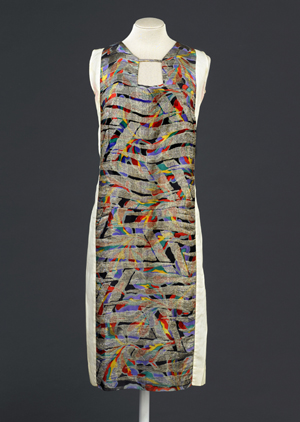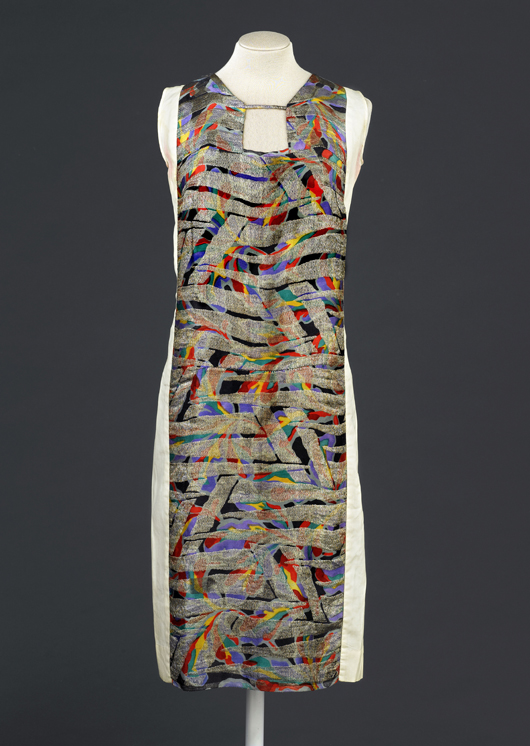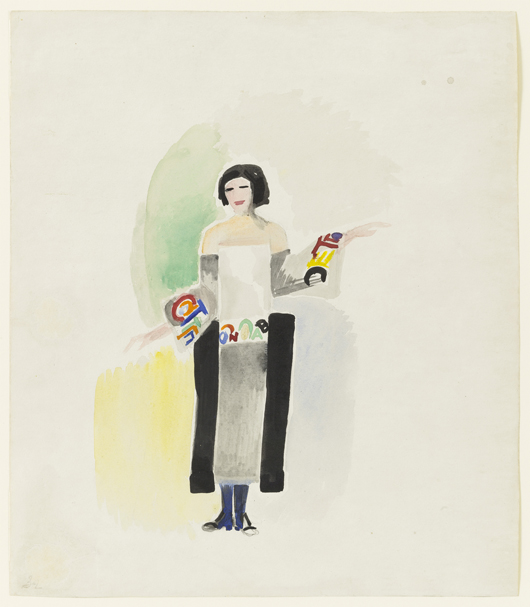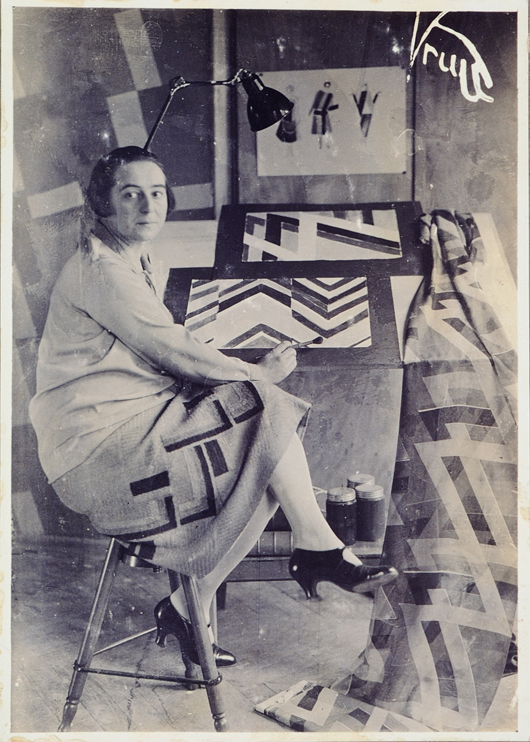
Sonia, who was intent on merging art and everyday life, applied this principle of “simultaneity” (color suggesting motion) to clothing, which naturally moves and flows with the body. She says she realized the potential of fabric in 1911, when she made a patchwork quilt for her newborn son and saw that it evoked the abstract patterns of cubist art.
In the next decade, she began making dresses in bold, geometric patterns that expressed the artistic ideas her husband was working out in paint on canvas. Her unusual ability to merge fine art with fashion marked the beginning of a long career as a groundbreaking textile and fashion designer. In 1964, she became the first living female artist to have a retrospective at the Louvre.
Now more than 300 of her garments, textiles and designs are on view at the Smithsonian’s Cooper-Hewitt, National Design Museum in an exhibition that focuses on her work in the 1920s, when she had her own fashion house in Paris, and in the 1930s, when she was designing fabrics for the Amsterdam luxury goods department store Metz & Co.
What’s amazing about Delaunay’s designs is how contemporary they look nearly 100 years later. As Matilda McQuaid, head of the textiles department at the Cooper-Hewitt, explains in the catalog, in the ’20s, Paris was the undisputed capital of the fashion world. Women demonstrated their independence through simplified styles, loose clothing and by tooling around in the new consumer plaything – the automobile.
Delaunay was the designer for the age. She designed costumes for Sergei Diaghilev’s Ballet Russes, and combined text and fabric in “poem dresses” worn to Dadaist soirees. After her “Simultane” collections were featured at the 1925 International Exposition of Decorative Arts in Paris, she received commissions from celebrities and actresses, including film star Gloria Swanson.
But high-profile clients weren’t enough to keep her fashion house afloat. After it closed in 1929, she continued designing textiles, finding an eager client in Metz & Co., which bought more than 200 of her designs. Although her later designs became slightly more commercial, they are still remarkable for their strong sense of color, originality and vitality.
Delaunay, who died at age 94 in 1979, was extraordinarily versatile. Besides her textiles and clothing, she illustrated books, painted ceramics, and designed costumes, interiors, tapestries and rugs. After World War II, she concentrated on her painting.
The timing of the Cooper-Hewitt show couldn’t be better. Several of Robert Delaunay’s cubist-inflected canvases can be seen in a survey of early 20th-century art at the Guggenheim Museum, two blocks away.
“Color Moves: Art and Fashion by Sonia Delaunay” opened March 18 and will close June 5. There are no plans for it to travel.
Copyright 2011 Associated Press. All rights reserved. This material may not be published, broadcast, rewritten, or redistributed.
AP-CS-03-18-11 0647EDT
ADDITIONAL IMAGES OF NOTE




